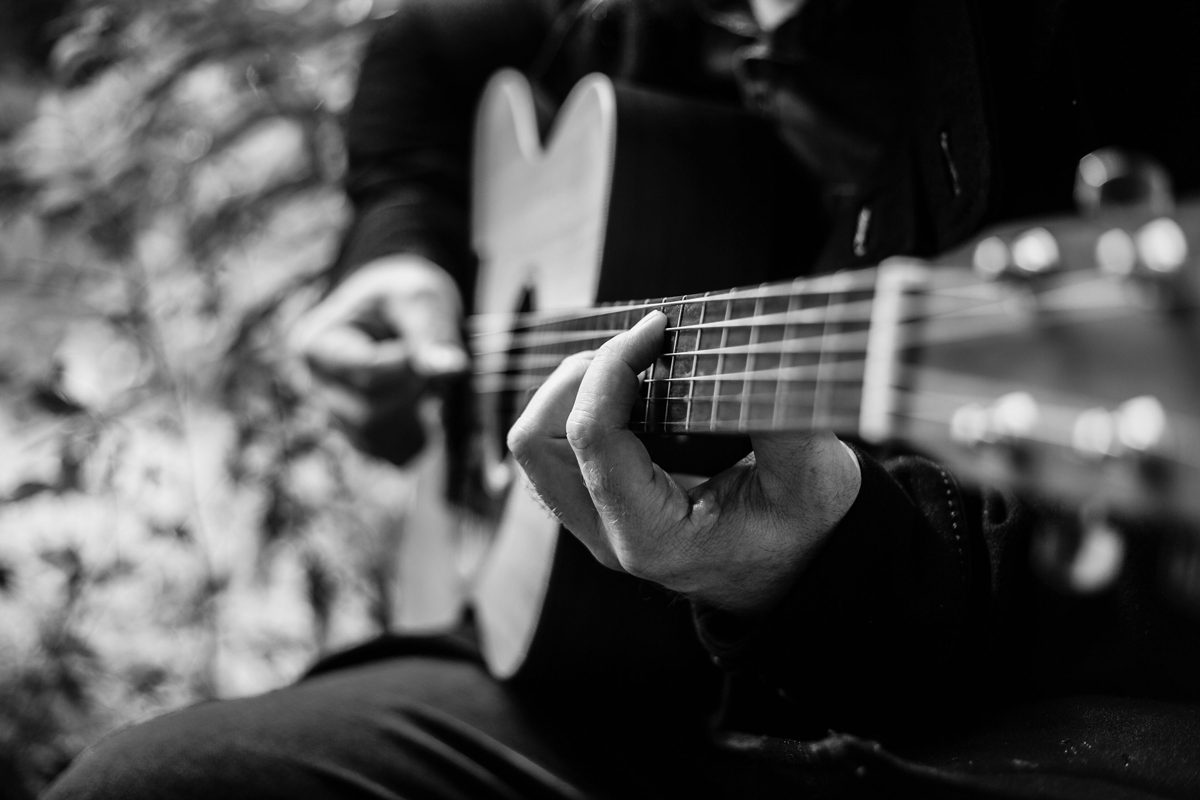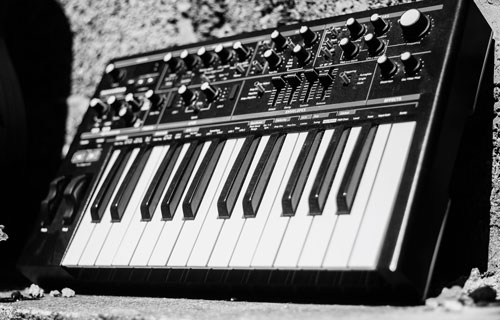
How do they relate to todays music?
An arpeggio is a musical technique where notes in a chord are played or sung in sequence, rather than simultaneously. Arpeggios can be used to create various rhythmic, harmonic, and melodic effects. The word “arpeggio” comes from the Italian word for harp and was first used in the 16th century.
- Examples of how to write them
- Piano, Guitar and Vocal lines
- For Guitar
- Add some dynamism to your tracks!
- Drums & your DAW
- So, how are arpeggios relevant today?
Examples of how to write them
Arpeggios can be written out in a variety of different ways, such as straight (1-2-3) or broken (1-2 and 3). Straight arpeggios are usually used to create a smooth melodic sound while broken arpeggios add more of an accentuated feel. Arpeggios can also be played in any key and at any tempo, providing endless possibilities for musical expression.
Piano, Guitar and Vocal lines
Arpeggios are commonly used in Piano pieces, Guitar solos, and even vocal lines. In fact, if you listen closely to popular songs on the radio today you will likely hear arpeggio patterns as part of the melody or accompaniment. In Piano pieces, arpeggios are often used to create a more lyrical sound and can be used in both traditional classical music as well as modern day Jazz.
For Guitar
In Guitar playing, arpeggios can provide a great way to add colour and expression to solos. Not only do they help create a richer sound, but they can also be used to emphasize certain chords and add interest to a solo.
Arpeggios can also be used in the creation of rhythm guitar parts or even as part of an orchestrated section.
Add some dynamism to your tracks!
Arpeggios are an essential tool for any musician who wants to create more dynamic and interesting music. Whether you are a beginner or an expert, you can use arpeggios to create the exact sound and feel you want in any piece of music.
By experimenting with different patterns and techniques, you can find new ways to express yourself musically. So if you’re looking for a way to spice up your music, look no further than the arpeggio.
Drums & your DAW
Arpeggios are of course an essential element of music production, and they can be particularly useful when it comes to creating drum patterns with drum samples and mixing in a digital audio workstation (DAW). So lets explore the role of arpeggios in drum samples, drum sample creation, mixing and how they can help you achieve a more professional and polished sound. Many drum loops and drum loop software, for example open drum machine designer follow the same principles of arpeggiation.
Check out our own samples at Macdrum.com. The very best in Professional drum samples. Also check out our drum loop packages and library collections. Paste them into a session or using midi notes for a pro sound! Either direct as audio or incorporate them with a new software instrument track. Our high quality samples will give your session the sound and drive it needs. They can also be used with an electronic drum kit or drummer track. Both flat and pre mixed samples are available. Why not create a new track and give our loops a try.
So, how are arpeggios relevant today?
As previously stated an arpeggio is a series of notes played in a specific order, typically in a broken chord pattern. Arpeggios can be played on any instrument, but they are often associated with keyboards and synthesizers.
In modern music production, arpeggios are often used to create melodic and rhythmic patterns, and they can add a sense of movement and interest to a track. Great for use in any DAW or with outboard synths and drum machines where are arpeggiator often comes as standard.

Creating Unique Rhythms
When it comes to drum samples, arpeggios can be a powerful tool for creating unique and creative rhythms. By using arpeggios as the basis for your drum samples, you can create intricate and complex rhythms that would be difficult to achieve with traditional drum programming techniques.
Additionally, using arpeggios as the foundation for your drum samples allows you to easily adjust the timing and spacing of each drum hit, giving you greater control over the overall feel and groove of your drum track.
Check out our royalty free drum samples at Macdrum.com sample library including multiple samples across genres, played and produced by the best. From whole kit sounds sample packs to electro and much more. We have the drum sound you need.
Mixing Tricks
Arpeggios can also be useful when it comes to mixing drum tracks in a DAW. By using arpeggios to create drum samples, you can easily layer and blend different drum sounds to create a more full and rich drum mix. Additionally, you can use arpeggios to create variations and fills within your drum track, helping to add interest and keep the listener engaged.
Some great examples of both modern & classical use
Arpeggios are an essential element of modern music production, and they can be particularly useful for creating unique and creative drum samples and for mixing drum tracks in a DAW (Digital Audio Workstation, such as Logic Pro, Pro Tools). Whether you're a beginner or an experienced producer, incorporating arpeggios into your workflow is sure to yield some exciting and dynamic results.
Extensive use in most musical styles
Arpeggios, being a type of musical phrase or figure in which each note is sounded individually, (one after the other), they are often used to create melodic lines that have a sense of forward motion and can be found in both modern and classical music. Below I've listed some great examples from both the classical and modern eras. Giving it more thought it becomes obvious just how important these types of figures are in creating interesting musical compositions. All the acclaimed acts from the last 70 years have used them extensively in their music with often greatly impressive results.
Classical Music composers
In classical music, arpeggios have been widely used by composers to add colour and texture to their compositions. Some of the most famous and influential examples come from the works of Bach, Beethoven, Chopin, Mozart and Schubert. For example, in Johann Sebastian Bach’s Prelude No. 1 in C Major for solo piano, he makes extensive use of arpeggios to create a beautiful and intricate texture.
Other great classical pieces
Other great classical pieces where arpeggios are used extensively include Beethoven's Moonlight Sonata, Chopin's Prelude No. 2 in A Minor for piano, Mozart’s Piano Concerto No. 20 in D Minor and Schubert’s Impromptu Op. 90, No. 4 in A-flat Major for piano. These pieces make use of arpeggios to create a lush and melodic sound that is highly evocative and often deeply moving.
Modern Pop & Rock
In modern popular music, arpeggios are also widely used by composers to add depth and emotion to their songs. For example, the iconic opening riff of Led Zeppelin’s “Stairway to Heaven” is built on a cascading arpeggio that creates an unforgettable and timeless sound. Similarly, Radiohead’s “Creep” makes extensive use of arpeggios throughout its verse and chorus sections in order to create a hauntingly melancholic atmosphere.
Jazz & Blues
Arpeggios are also used extensively in jazz and blues music. They are often employed to help create an improvisational feel and can be heard in the works of legendary jazz players such as Miles Davis, John Coltrane and Charlie Parker.
Similarly, blues guitarists like BB King and Stevie Ray Vaughan made extensive use of arpeggios in their solos and licks.
Think of the broken up chordal style of many of the blues players incorporating both strummed chords and individual notes. Players from countries Merle Travis to rocks great innovator Jimmy Hendrix have both made prominent use of the arpeggio.
Overall, arpeggios have been used in both modern and classical music to help create distinctive and memorable sounds. They are often used as a way to add texture and color, as well as create an atmosphere that is evocative and emotionally charged. As such, they play an important role in both classical and contemporary musical genres.
As you can see, arpeggios are an essential part of both classical and contemporary musical styles. While there are many different ways to use arpeggios, some of the most memorable and effective examples come from the works of Bach, Beethoven, Chopin, Mozart and Schubert in classical music as well as Led Zeppelin, Radiohead, Miles Davis and BB King in popular music. No matter what genre you are working in, it is always worth experimenting with arpeggios to see what musical ideas they can help create. Who knows, you could be using them in your next masterpiece!
So there you have it – a brief overview of the best arpeggios used in both modern and classical music. Whether you are composing or performing music, arpeggios are an essential tool for bringing your music to life and creating unique, memorable sounds. So go ahead and explore the world of arpeggios – you never know what musical surprises they may have in store!
Best
